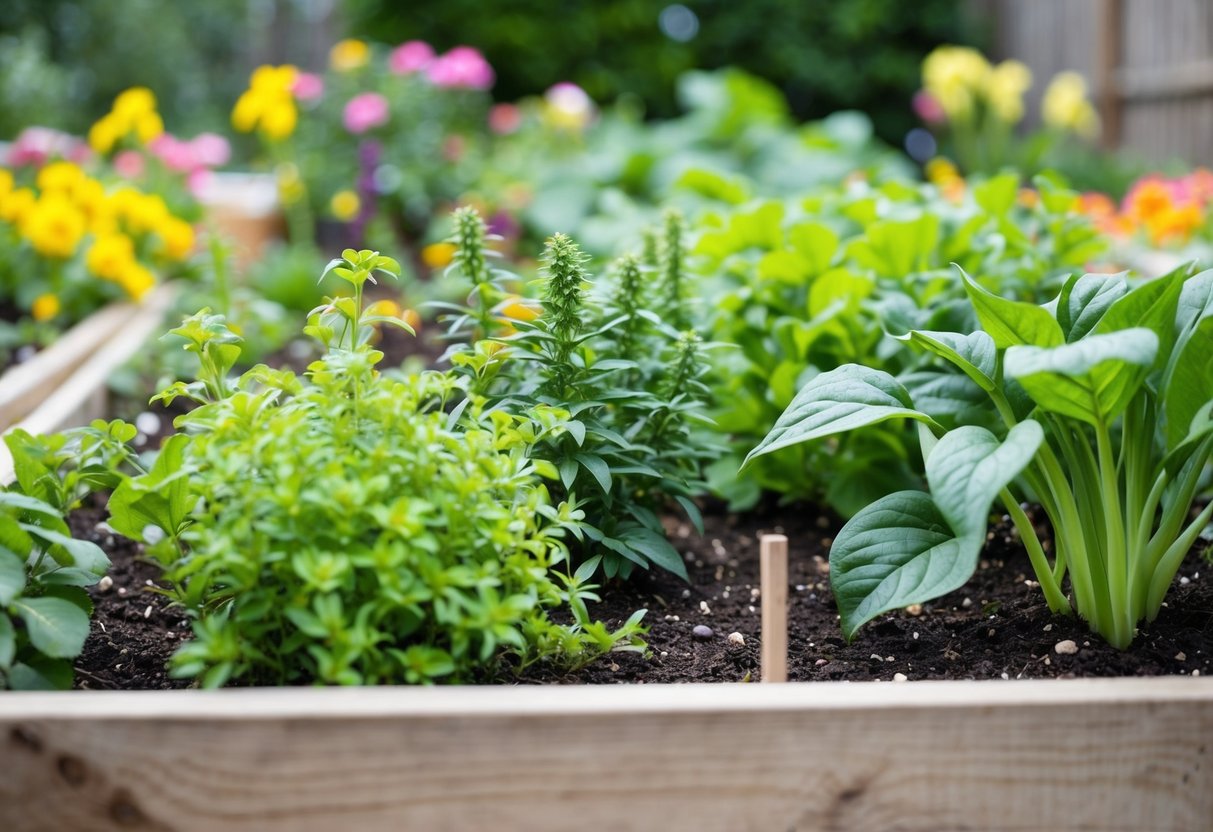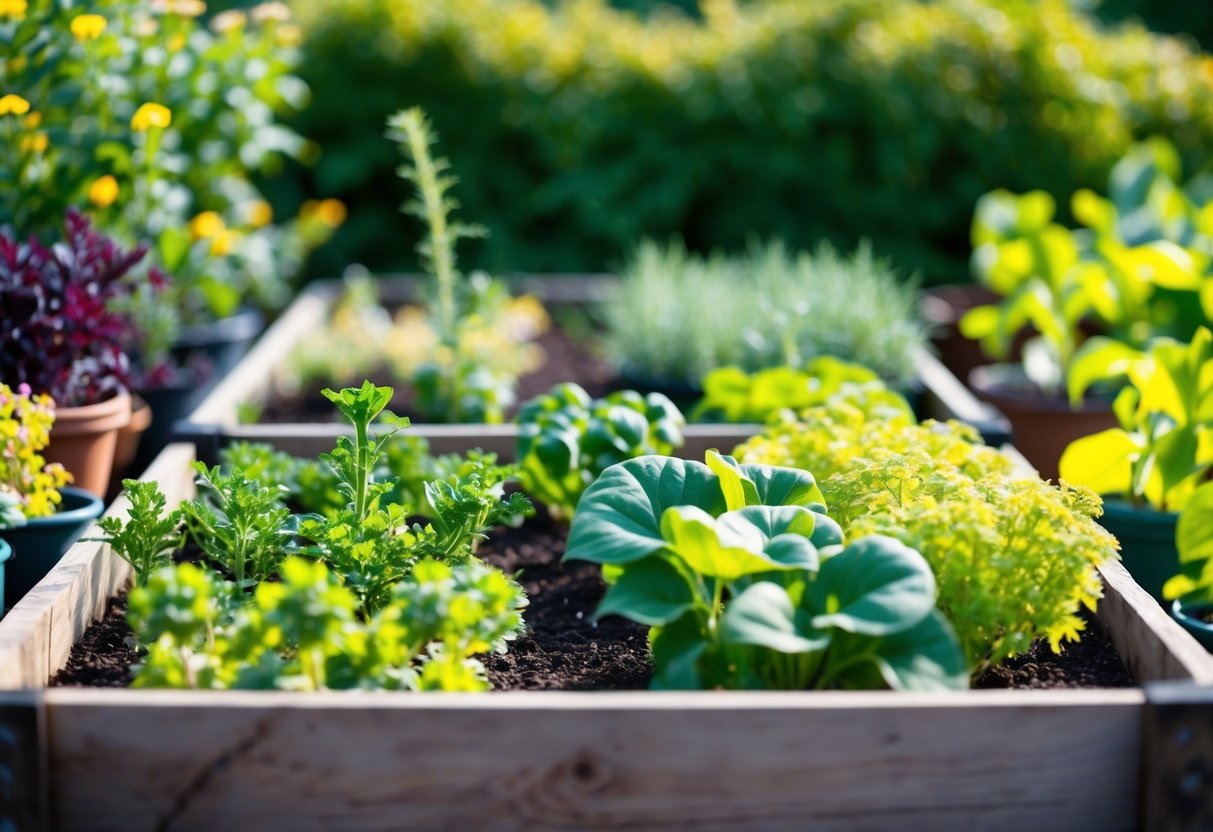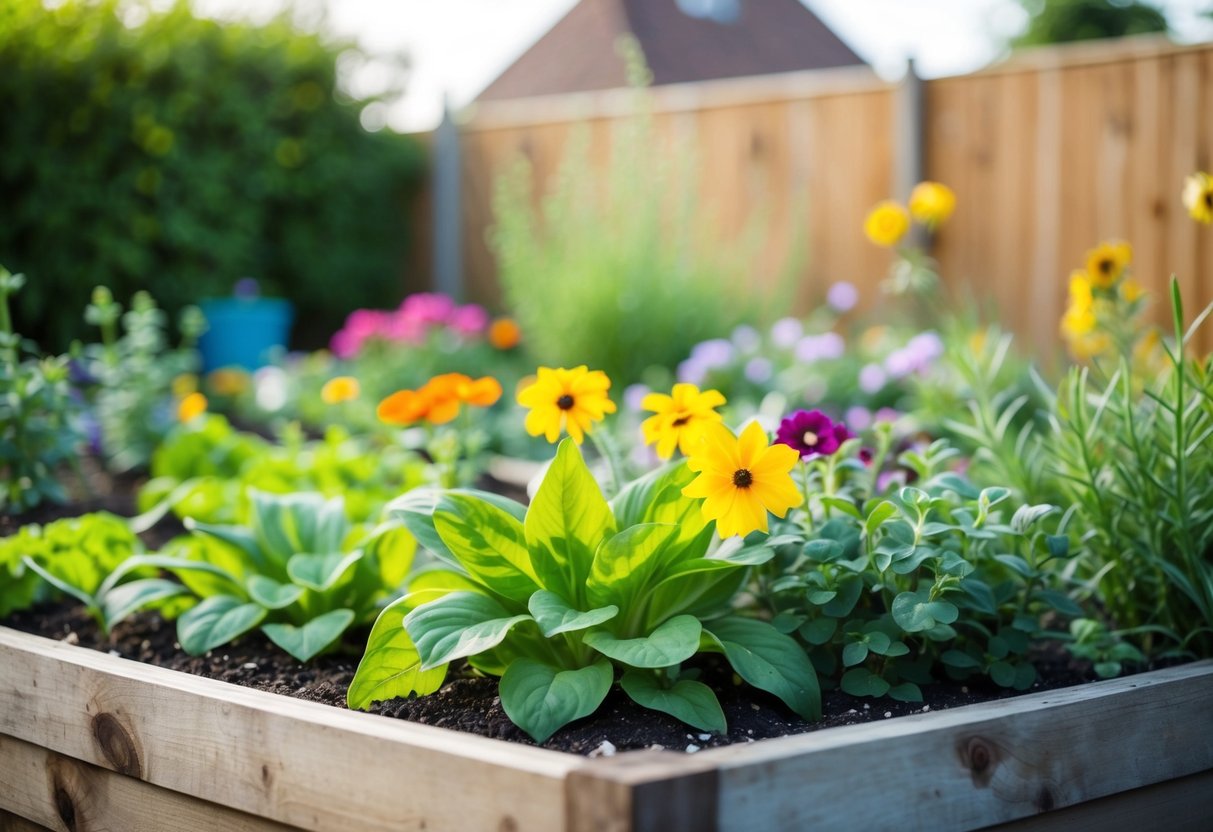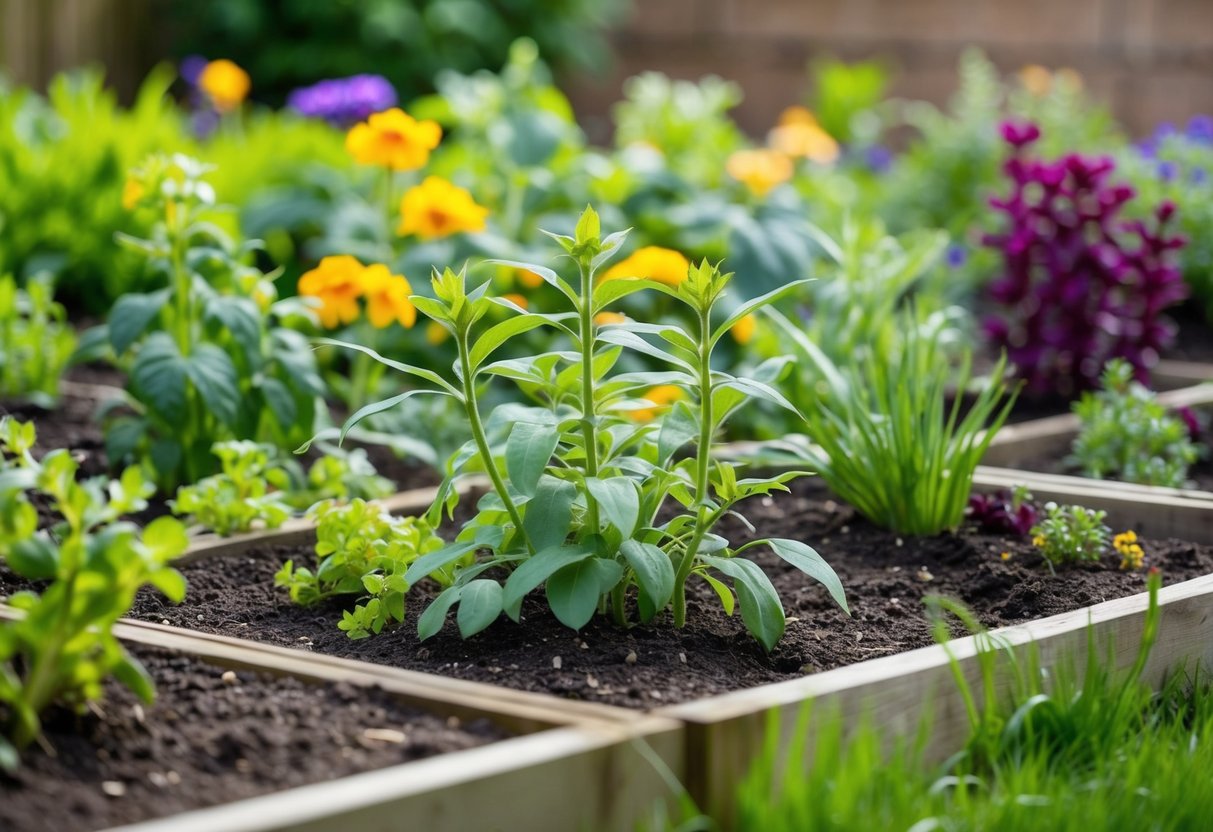Can You Overcrowd Bedding Plants? Tips for a Thriving Garden
Bedding plants like annuals, perennials, and biennials bring life and color to your garden. However, fitting as many as possible into one area can be tempting. Overcrowding your bedding plants can lead to issues that affect their health and growth. When plants don’t have enough room, they can struggle for nutrients, light, and water.

You might notice some signs indicating that your plants are too cramped. For instance, if there’s no airflow around the plants, they can become more vulnerable to mold and pests. To encourage healthier growth, think about spacing them out properly. This way, your annuals and perennials can thrive and your garden will look its best.
Managing space effectively is key. By giving each plant room to flourish, you help maintain a vibrant and beautiful flower bed. Consider planning ahead and grouping plants based on their spacing needs to ensure they all get the chance to shine.
Choosing the Right Bedding Plants

Selecting the right bedding plants involves understanding their specific sunlight and shade preferences, as well as their hardiness to different weather conditions. This ensures your plants thrive in their chosen spots, whether it’s a sunny border or a sheltered nook in your garden.
Assessing Sunlight and Shade Requirements
Understanding the light needs of your plants is crucial. Some bedding plants like marigolds and petunias love full sun. These plants thrive in spots where they can bask in sunlight for most of the day. On the other hand, plants such as begonias and busy lizzies prefer shady areas. They do well where there is little direct light.
Mixing and matching the plants depending on your garden’s light conditions can create a vibrant display. For instance, lobelia and snapdragons are versatile and can adapt to varying light levels. When planning, consider where the sun hits during different parts of the day to give each plant the environment it needs.
Understanding Plant Hardiness
Hardiness refers to a plant’s ability to survive adverse conditions, like frost. Bedding plants such as osteospermum and snapdragons have different levels of hardiness. Knowing whether a plant can withstand cooler temperatures is important in planning your planting schedule.
Before purchasing plants, check the hardiness ratings at your local garden centre. This helps ensure your plants can survive seasonal changes. For example, plants kept as houseplants need different care compared to outdoor plants. Being aware of weather-related needs, like protecting from frost, will set your garden up for success.
Preparation and Planting Techniques

When planting bedding plants, preparing the soil and choosing the right spacing are crucial for healthy growth. Proper techniques ensure plants receive the nutrients and space they need to thrive.
Soil and Compost Basics
First, focus on preparing the soil for your bedding plants. Start by loosening it to allow roots to penetrate easily. Adding compost is essential as it strengthens soil structure and provides nutrients. A good mixture of soil and compost ensures better water retention and drainage.
Use purchased seeds or small plants from a nursery, often known as plugs, which benefit from rich soil conditions. Adding a layer of organic material like mulch can help retain moisture and suppress weeds. This step is important for encouraging robust plants early in their growth.
Spacing and Arrangement Tips
Now, consider the appropriate spacing for your plants. Overcrowding can lead to poor air circulation and increased disease risk. For instance, when planting from seeds or plugs, follow the guidelines on the seed packets or nursery labels for best results.
Arrange the plants in a way that maximizes sunlight and airflow. For example, plant taller plants toward the back of a garden bed and shorter ones in front. Think about grouping plants with similar needs together to make watering and care easier. Proper spacing allows each plant to grow to its full potential, ensuring your garden looks its best.
Caring for Bedding Plants

Bedding plants need your attention to thrive. These plants require regular watering, correct nutrients, and some pruning to remain healthy and vibrant.
Watering Essentials
Consistent watering is vital for the health of your bedding plants. Make sure the soil stays moist but not waterlogged. It’s a good idea to water your plants in the early morning when it’s cooler, minimizing evaporation.
For bedding plants in pots, checking the soil moisture is key. You can stick your finger about an inch into the soil to see if it feels dry. If it does, go ahead and water your plants generously. Submerging the whole pot in water for a few minutes is a great method to ensure thorough watering. Keeping your plants well-hydrated helps them absorb nutrients efficiently.
Feeding and Nutrient Management
Feeding your bedding plants regularly will keep them strong and colorful. Use a balanced slow-release fertilizer to support their ongoing growth. This releases essential nutrients over time, avoiding the need for frequent applications.
Tomato fertilizer can also be a great choice because it’s rich in potassium, which helps with flower and fruit development. It’s best to apply fertilizer every few weeks or according to the product instructions. Just remember, more is not always better—over-fertilizing can harm your plants. Proper nutrient management ensures they have plenty of energy to bloom.
The Importance of Deadheading
Deadheading is the process of removing spent flowers. This is crucial because it prevents your plants from using energy to produce seeds. By snipping off faded blooms, you encourage your plants to produce more flowers, keeping your garden lush and vibrant.
Use clean, sharp scissors or your fingers to pinch off the dead flowers. Regular deadheading will keep your garden looking tidy and help the plants focus on new growth. It’s a win-win situation: you get more blooms, and your plants get to channel their energy into creating them.
Designing With Bedding Plants

Bedding plants can transform your garden by adding color and structure. By using them thoughtfully, you can create stunning displays, lush ground covers, and charming container gardens.
Creating Visual Impact
To create a visual impact with summer bedding plants, choose a variety of colors and heights. Mixing tall plants like cosmos with shorter ones such as marigolds can add depth. Cluster these in small groups to make bold statements. Consider companion planting, where plants help each other grow, for a harmonious look. For example, pairing petunias with decorative grasses can create a striking contrast. Use plastic pots or raised beds to organize your plants and keep them healthy.
Using Bedding Plants for Ground Cover
Bedding plants are great for ground cover, offering an easy way to fill in empty spaces. Choose plants that spread well like lobelia or creeping thyme. This not only keeps weeds at bay but also adds a carpet of color to your garden. Make sure the plants you choose are suitable for the amount of sunlight and type of soil in your garden. Group annuals together for consistency and easy maintenance. Keep your planting scheme simple but attractive.
Incorporating Containers and Hanging Baskets
Containers and hanging baskets are perfect for showcasing bedding plants in smaller spaces. Use them on balconies, patios, or as accents in your garden. Fill containers with a mix of flowers like pansies and ivy for a varied look. Hanging baskets can have trailing plants, creating a waterfall effect. Use pots with good drainage and don’t overcrowd them to ensure healthy growth. This can make a vibrant display that can be easily moved or adjusted throughout the season.
Overcoming Challenges with Bedding Plants

When your plants, such as busy lizzies or geraniums, start to look cramped, it might be time to check for overcrowding. This happens when roots don’t have enough space, causing plants to compete for water and nutrients. This can lead to stunted growth or even dead plants.
Revitalize your garden by spacing bedding plants like begonias and antirrhinums properly. Space matters: Ensure that each plant has room to grow by considering its mature size. For example, sweet peas and pelargoniums need space to spread out.
You can also use plant supports for varieties that need it, like sweet peas. This helps prevent overcrowding by keeping plants upright and separate. For those hardier annuals like nemesia and gazania, choosing drought-tolerant varieties can help reduce water needs, especially in drier climates.
Watering and nutrients are crucial. Check soil regularly to ensure your fuchsias and begonias get what they need. Adding a layer of mulch can help retain moisture, which is beneficial in preventing competition for water in crowded arrangements.
For some solutions, thinning out plants may be necessary. Thinning not only reduces competition but also improves air circulation, which is vital for preventing diseases. Be careful when removing any plants to avoid damaging the roots of others.
When your plants grow too tall or too close, consider techniques like pinching back. This involves removing the growing tips of plants to encourage bushier and healthier growth. It works well for plants like gazanias and fuchsias.
Regular checks on your garden can help spot issues early. By taking simple steps, you can ensure your bedding plants thrive and continue to bring color and joy to your green space.







